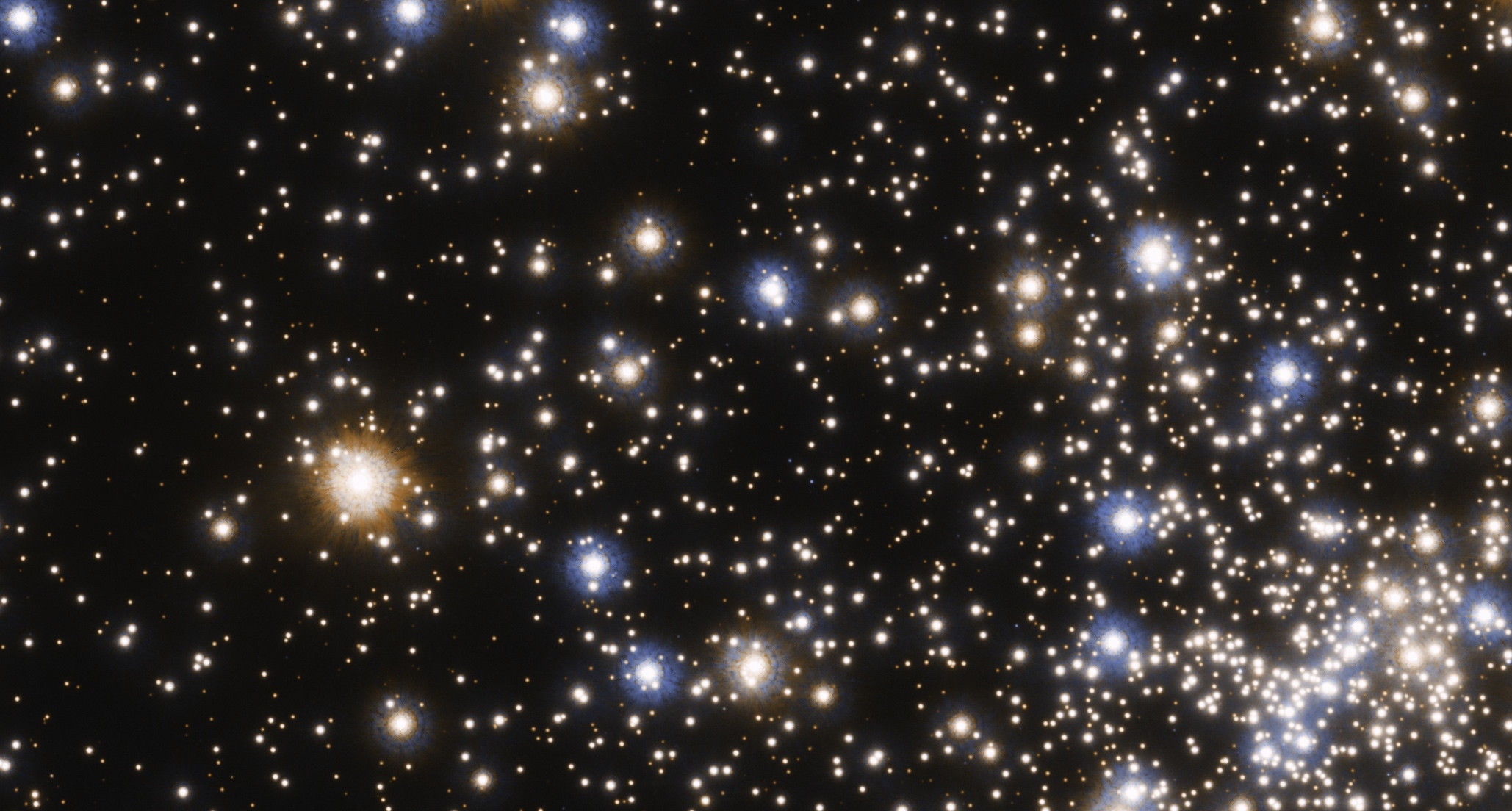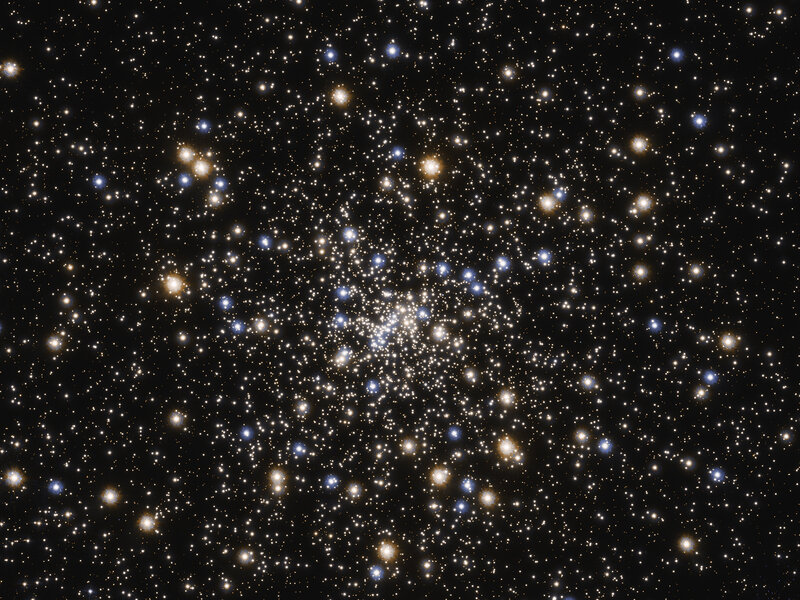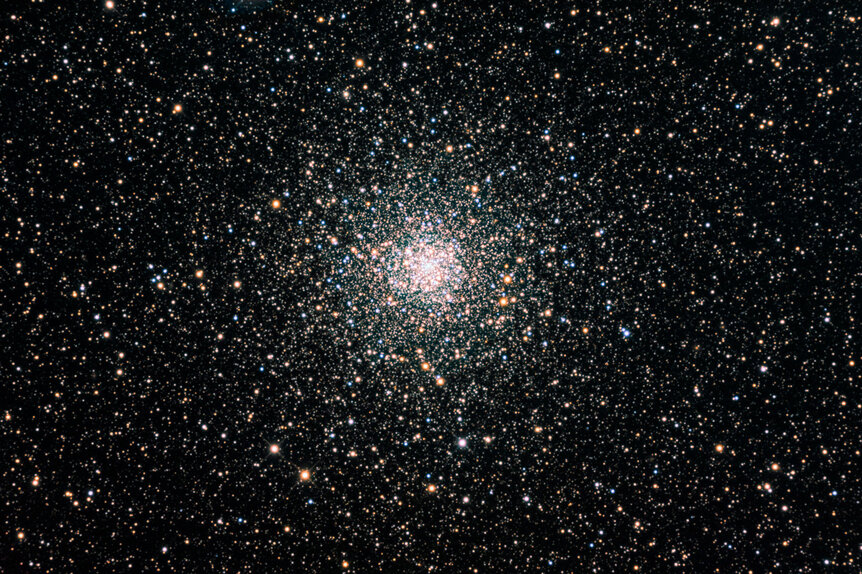Create a free profile to get unlimited access to exclusive videos, sweepstakes, and more!
A precise distance for an ancient beauty

So this is nifty: The globular cluster NGC 6397 is 7,800 ± 330 light years away.
Why is that nifty? Because before, we thought it was more like 8,500 light years away, with an uncertainty of ± 900 light years. A new technique has been employed to get a more accurate distance with much lower uncertainty (4% versus 10%).
That's actually pretty important. Globular clusters are like nature's labs, helping astronomers understand how stars are born, age, and die, and they're also used for other things like getting distances to galaxies and understanding how distant galaxies behave, too.
OK, first: What exactly is a globular cluster? They're clusters of stars, usually hundreds of thousands of them, all held together by their own gravity into a roughly spherical ball. In general, the stars in them are very old and all the same age; globulars formed not long after the Big Bang, and the stars in them formed all at once (though there are exceptions; more massive clusters sometimes can pull in more gas and have a second wave of star birth).
That makes them excellent for studying stars. If all the stars have the same age and formed from the same gas, they all have the same composition. Any differences between them are therefore likely due only to their masses. As stars age they use up fuel in their cores, and that depends on their mass, too. More massive stars die faster. If you can find the stars that are just now dying, and use some physics to get their age, then you've got the age of the cluster itself.
But a lot of this also depends on knowing the cluster's distance. That's hard! Most are so far away (over 10,000 light years) that the usual methods for getting distances don't work.
…unless you find one that's closer. And you use Hubble.
Which is just what a team of astronomers* did. They used Hubble to observe the globular cluster NGC 6397, which is a perfect target. It's old, medium mass (so it doesn't have the second wave star birth complication), and relatively close as these things go. Only one globular, M4, is closer and there's a lot of dust and gas between us and it, which messes up the measurements. NGC 6397 is close enough that they could measure the trigonometric parallax of its member stars.
I explain what trigonometric parallax is in the video Crash Course Astronomy: Distances:
To synopsize it, as the Earth moves around the Sun, we see close by objects at a slightly different angle (like holding your thumb out and blinking first one eye then the other; your thumb seems to move back and forth relative to more distant objects). We know how big the orbit of the Earth is, so measuring the angles stars move gives us their distance if you apply a little trig.
NGC 6397 is so far away that's still hard, because measuring a star's position is fraught with uncertainty at the scale they need accuracy. So what the astronomers did was clever: They let the cluster trail across the camera, making hundreds of little streaks. They could then measure the relative positions of the stars at hundreds of spots, reducing the uncertainty (what are called "systematics": distortions in the detector, the very slight shaking of the telescope called "jitter," and so on). The result is much higher accuracy.
And when they were done, they got the distance as 7,800 light years. And the best part is their accuracy is a lot higher than previous measurements, so we can be confident this is very close to the actual distance.
Once that was known, they could then look at the colors of the stars themselves to see which ones are just now starting to die. The best fit was for an age of 13.4 billion years.
Mind you, that's old! The Universe itself is only a hair older. NGC 6397 was one of the first objects to form in the cosmos itself, and probably was already settled down by the time the Milky Way was just starting to get its act together as a galaxy. I remember some years ago that cluster like this one were dated as being older than the Universe itself, which caused a lot of breathless headlines! But of course the problem was that neither the cluster's nor the Universe's age were well known then. Once better observations were made and better techniques employed to analyze them, we found that the Universe, as expected, is older.
I'll note that the cluster is so old that even stars like the Sun in it are long dead. Only much lower mass stars have been miserly enough with their nuclear fusion to last this long.
It's expected that the European Space Agency's Gaia mission, which is measuring the positions of a billion stars, will also get good parallax observations of NGC 6397, though using a slightly different method to measure them. That's good; it's nice to have separate experiments on the same subject to see if they agree or not. I hope they do.
And if they don't, well, that'll be interesting too. It can be aggravating when that happens, but also sometimes tells us something important about either the Universe, or the way we observe it. And either (or both) of those is worth knowing.
* It was led by my old Hubble buddy Tom Brown, with whom I worked on STIS, a camera on Hubble, and also on the team is my old friend Adam Reiss, who led a study that discovered dark energy!
















